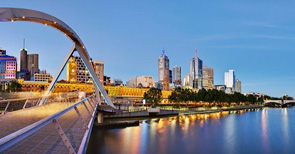-

Industrial culture reimagined
The IBAG factory building in Neustadt an der Weinstrasse was one of Germany’s first reinforced concrete buildings and was extensively refurbished.
Industrial culture reimagined
Neustadt - Germany
The IBAG factory building in Neustadt an der Weinstrasse was one of Germany’s first reinforced concrete buildings. Having been allowed to fall into increasing disrepair, this architectural gem was extensively refurbished and converted into a high-quality residential complex in 2017, with a wide range of products from MC making a significant contribution to its successful transformation.
Listed ruin
Built in 1911 according to plans penned by architect Karl Fischer, the huge IBAG factory was one of Germany’s first ever skeleton-built “iron concrete structures”, predating the advent of steel reinforced concrete construction. It was used among other things for the manufacture of agricultural machines. However, its useful life in this domain ended in 1997. When the one hundred year old building was finally listed in 2011, the great production hall was little more than a steel skeleton with a cracked concrete shell. Hence, the damage catalogue proved to be extremely extensive: Parts of the concrete columns were carbonated through to behind the reinforcement, in some cases the stability of the arched roof spanning the production hall could no longer be guaranteed, and columns were missing in the side aisles. An initial assessment estimated the damaged areas to equate to 10 per cent of the concreted expanse, revised up to 15 per cent in the course of the renovation project.
Concrete repair systems
Unperturbed by the dilapidated state of the structure, Regioplan GmbH of Giessen ultimately acquired the building with a view to converting it into high-quality living space. The engineering office KuA of Darmstadt was entrusted with the planning work – and with Wayss und Freytag Ingenieurbau AG of Frankfurt, the same company was awarded the refurbishment contract that was actually responsible for construction of the factory building in 1911.

© MC-Bauchemie 2019
The concrete repairs started at the roof of the production hall and extended down to the columns. Three arched roof segments were so badly damaged that they had to be completely shuttered, reinforced and re-concreted. The products of the MC Nafufill series were the first choice for the subsequent renovation measures. The variant selected for repairing the concrete components was Nafufill KM 250, a fibre-reinforced, structurally strengthening PCC concrete replacement characterised by its high carbonation resistance, de-icing salt resistance, chloride-resistance and excellent fire protection properties. Nafufill KM 103, a PCC fine filler for interior and exterior use, was used for the finishing touches. In order to also safeguard the surfaces over the long term, it was decided to apply MC-Color Flex pure as an effective concrete protection coating with a crack bridging capability down to -30 °C.
Creative conversion of a former industrial facility
Between February and November 2017, a total of 6,200 m² of concrete was repaired during the refurbishment of the IBAG factory building, using 200 tonnes of mortar. All the work was carried out in close consultation with the heritage protection authorities. Third-party monitoring of each stage of the project was performed by Gemeinschaft für Überwachung im Bauwesen (GÜB). Two-storey maisonette apartments with variable floor plans, garden sections and spacious roof terraces are currently being installed in the reimagined hall. Thanks to root and branch concrete restoration, the IBAG factory building has been preserved as a historical monument to industrialisation in Germany.
-
Name
Industrial culture reimagined
-
Country
Neustadt - Germany, 2020
-
kategorije
-
Products
-
Naš časopis
Preuzmite najnovija izdanja našeg magazina za klijente i zaposlene MC aktiv.
-
Preuzimanje
Ovde ćete naći sve relevantne tehničke podatke o našim proizvodima kao i brošure naše kompanije, oblasti stručnosti i kategorije proizvoda.
-
Reference
Kliknite ovde da bi pogledali naš odabir referentnih projekata raznih vrsta i načina aplikacija.
-
Kontakt
Kliknite ovde da biste posetili naš odeljak Kontakt.
